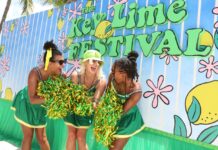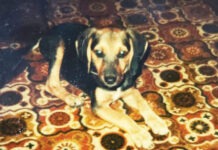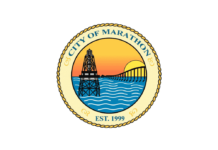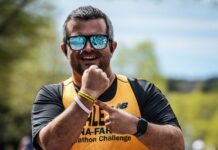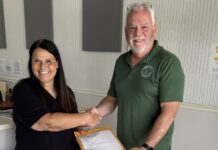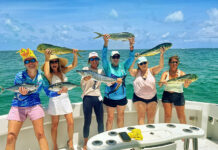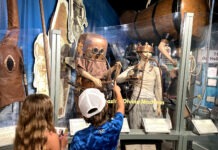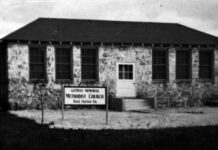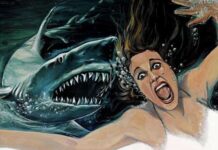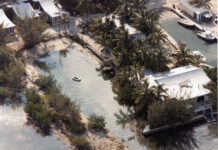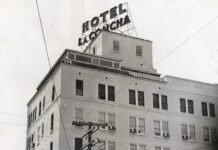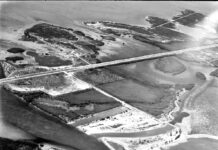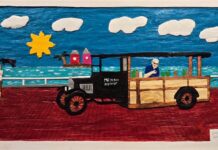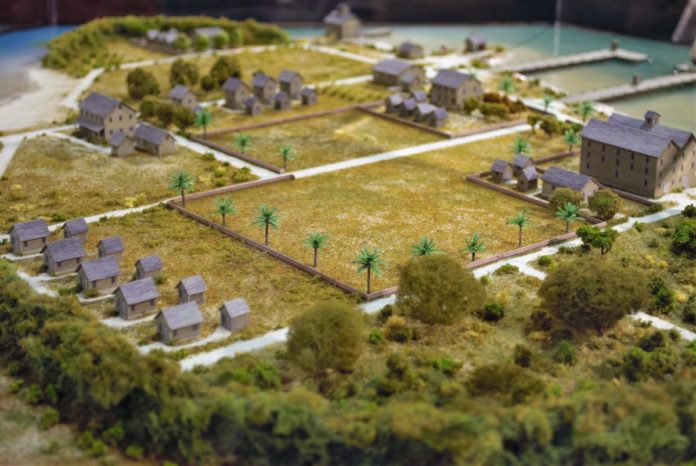
Indian Key was once the most important island in the Florida Keys not named Key West. The 11-acre island is surrounded by the Atlantic Ocean and located about a mile offshore of the Matecumbe keys. Today, the island is home to Indian Key Historic State Park. On Aug. 7, 1840, the island was the site of the southernmost Indian attack of the Seminole War. Populated by fewer than 50 people on the day of the attack, six people were killed during what is generally referred to as the Indian Key Massacre.
At about 2 a.m., Indian Key resident James Glass was walking outside his small cottage on Water Street. Under the light of the moon, Glass saw a row of dugout canoes lined up along the edge of the island — Indian canoes. He hurried to his neighbor’s home and quietly knocked on the door of George Beiglett. Wanting to alert Captain Housman to the threat, the two men climbed over the fence separating the back of their properties and the town square only to find a large group of Indians huddled in the night’s shadows. One of the Indians raised his rifle and shot at the two men. His weapon flashed but did not fire. Beiglett, carrying a shotgun, fired back. When he did, he let out a wild shriek and then ran off in the direction of the island’s largest structure, the warehouse. Glass ran the other way.
At the warehouse, Beiglett encountered a man and a boy named Joseph Sturdy, and the three decided to climb down into the cistern underneath the warehouse floor, where they reportedly hid in chest-deep water. As the sun began to rise, light slipped through the cracks in the wooden floor. Beiglett crept out of the cistern, into the warehouse, and climbed up into the cupola atop the roof. From the third-story vantage point, he could see across the island.
The Indians were everywhere. They were ransacking the warehouse, stores and homes. They were setting structures on fire. Beiglett left the cupola and rejoined the other two in the cistern. It proved a suitable hiding place before the Indians took the supplies they needed and lit the building on fire. As the warehouse burned down around them, Beiglett and the sailor managed to slog across the cistern and escape through the trapdoor, their hair singed, and their arms burned and blistered, but they were alive. The same could not be said for the Sturdy boy, who likely succumbed to smoke inhalation before being boiled in the cistern’s water.
The Motte family suffered the greatest number of losses. John Motte and his wife lived on the island with their daughter, their newborn child, and John’s mother-in-law. Upon hearing the gunshots, hoops and hollers, John led his family out of their house and into the smaller kitchen structure. The Indians found them. One raised the barrel of his rifle and fired a shot at the door. The ball penetrated the thin wood and struck John Motte, who died as a result of the wound. The Indians then broke down the door and dragged Mrs. Motte, clutching her newborn baby to her bosom, outside. The mother was killed, and the baby was tossed into the Atlantic, where the child drowned. Motte’s 70-year-old mother-in-law survived the day. His older daughter was dragged outside and clubbed to death.
The Henry Perrine family, too, would be awakened by the chaos escalating across the island. Perrine gathered his family, including a daughter who had been sick, and they met in the bathroom. Henry lifted a trap door leading down into the bathhouse beneath the home. When the sick daughter hesitantly descended and stepped into the water, she recoiled and placed her foot on the wooden plank. What she left behind was a discernible, wet footprint. Should the Indians find it, it would have led the Indians to where the family was hiding. Henry Perrine told his family to continue, to go beneath the wharf and hide in the turtle crawl. Henry returned to the house, covered the trap door with a seed chest, and when the Indians came, he tried to reason with them.
“I am a doctor,” he said. “I can help you,” he offered. At first, it seems, the doctor’s pleas worked, and the Indians went away. When they did, Perrine went to the cupola and barricaded himself inside, an action that would offer temporary relief.
The Indians, however, would come back and come back with a newfound interest in Perrine. They broke through the cupola’s trap door and shot and killed Dr. Perrine as his family, hiding in the turtle crawl beneath the home’s wharf, listened to the entire act go down. After killing Perrine, they set the house on fire, and as it burned, his family was trapped beneath it. The Perrine family would survive the ordeal. Two of the children would write memoirs later in life that would recount the horrifying details.
While most stories about Indian Key end with the attack, the island has many stories still to tell. Over the next three weeks, the island’s connection to Key West, Key Vaca and more will be explored.

